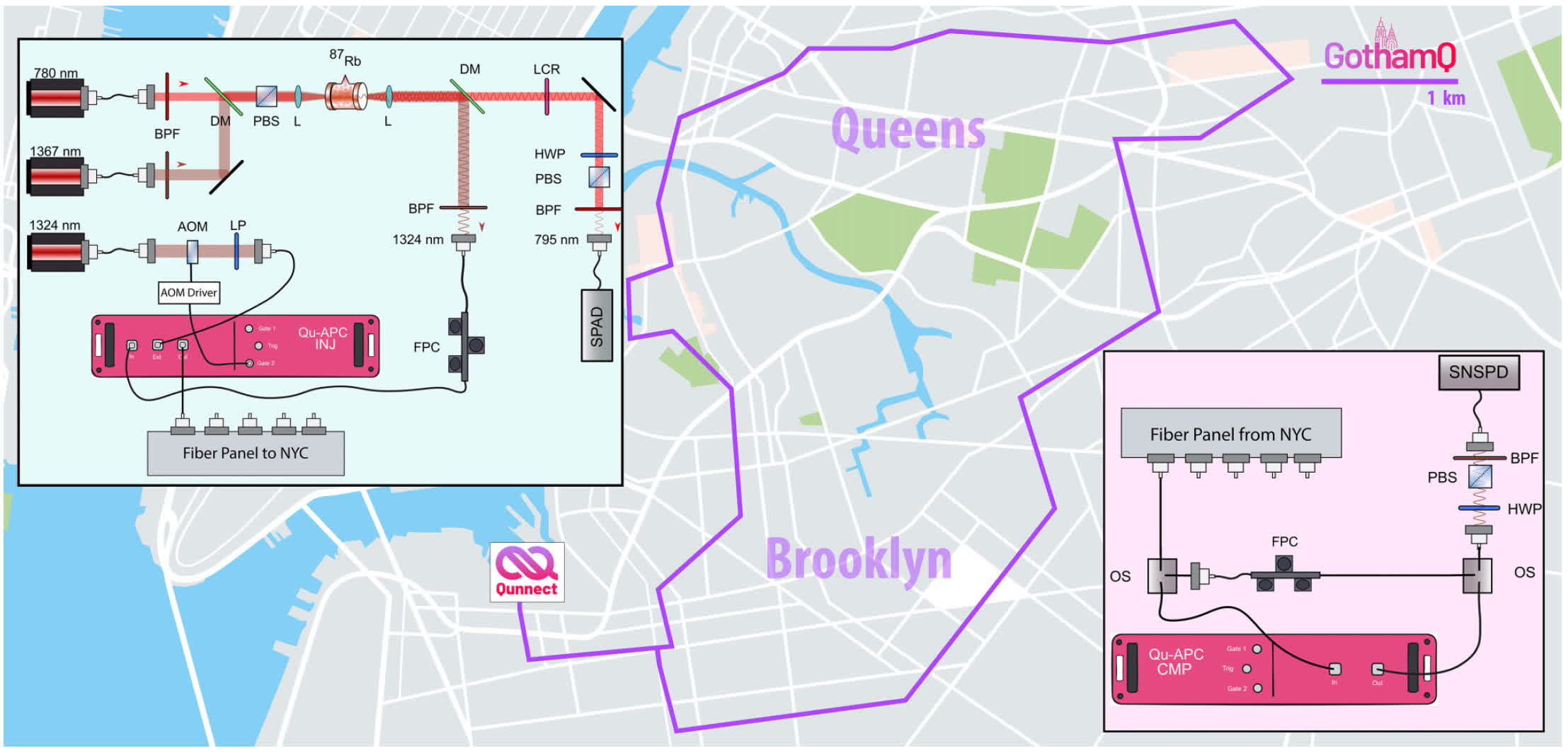Forward-looking: Qunnect, a New York-based company specializing in hardware for scalable quantum networks, has announced significant progress in its quest to build a telecommunications network capable of sending and receiving data through entangled photons.
Qunnect conducted an experimental quantum internet infrastructure test beneath New York City for two weeks, demonstrating that entangled photons can be used to transfer data with significant accuracy and reliability. Utilizing its proprietary polarization and compensation devices, the New York-based company has apparently achieved a key milestone in developing a true quantum internet.
Quantum entanglement is a unique phenomenon described by quantum physics and is also essential for quantum computing. The theory describes a connection between two particles, or groups of particles, at the most fundamental level, regardless of the distance between them. The quantum state of an entangled particle cannot be described – or changed --independently of the state of the other. The speed of light is not a limiting factor.
Entangled pairs of photons are crucial for the development of several practical quantum applications, according to Qunnect's study. Advanced quantum computing, quantum-enhanced sensing, and quantum communications are all feasible if we can reliably generate and utilize entangled photons within traditional computing technologies.
Preserving the "quality" of entanglement while using traditional communication channels such as optical fibers is a challenging task, according to Qunnect. The researchers have developed a fully autonomous system that theoretically addresses this issue, maintaining the polarization entanglement between a pair of photons.
"In our lab, we generate polarization-entangled pairs of photons using spontaneous four-wave mixing in a warm rubidium vapor," the researchers state. This method produced a "bichromatic" entanglement source, with one photon having a wavelength of 795 nm and the other at 1324 nm. The 795 nm photon is compatible with many quantum devices, while the 1324 nm photon is suited for loss-resistant propagation through optical fibers.
Qunnect used its self-built "automated polarization compensation" devices to transmit the 1324 nm photon through a 34 km optical fiber beneath New York City. By the end of the experiment, the photon pair remained entangled. The system operated as expected and was entirely "user-free" for 15 days, demonstrating an uptime of over 99.8 percent.
Qunnect's underground experiment serves as a demonstration that quantum entanglement can be harnessed to create next-generation quantum connections with current network devices and infrastructure. The company now aims to leverage its breakthrough to develop quantum-focused technologies, including quantum computers, sensors, and communication equipment.

